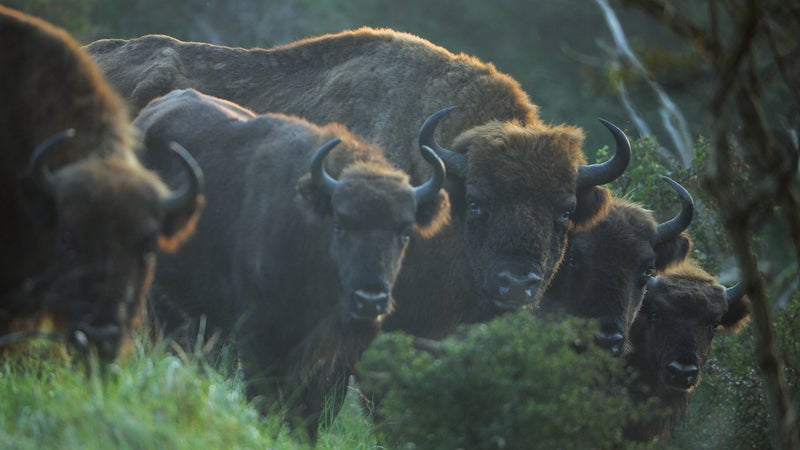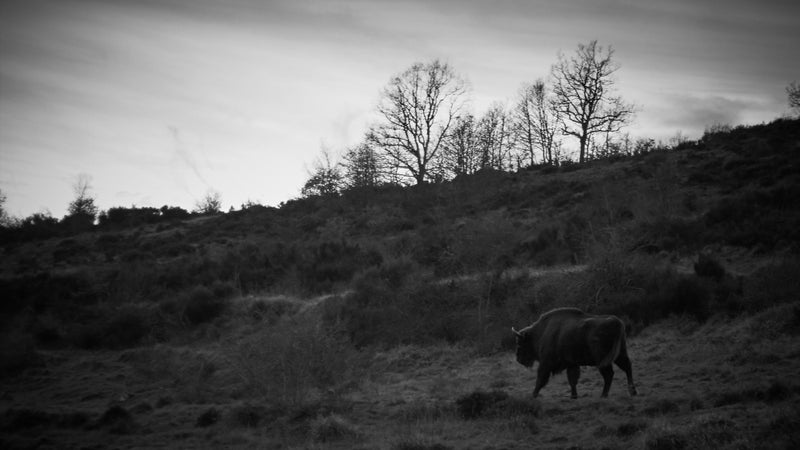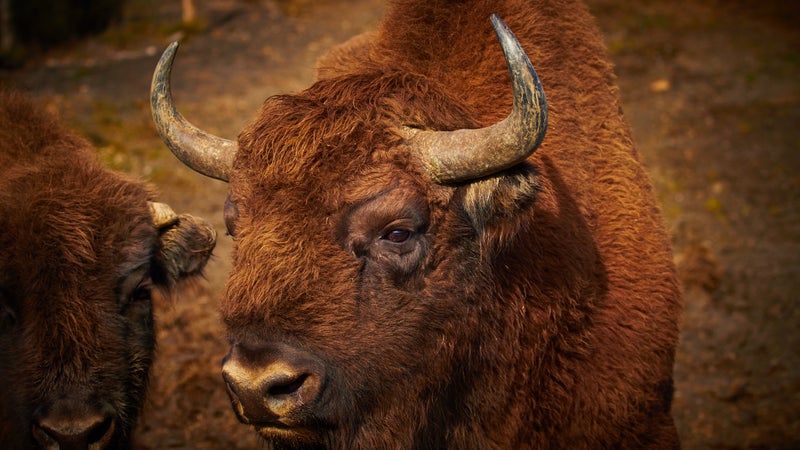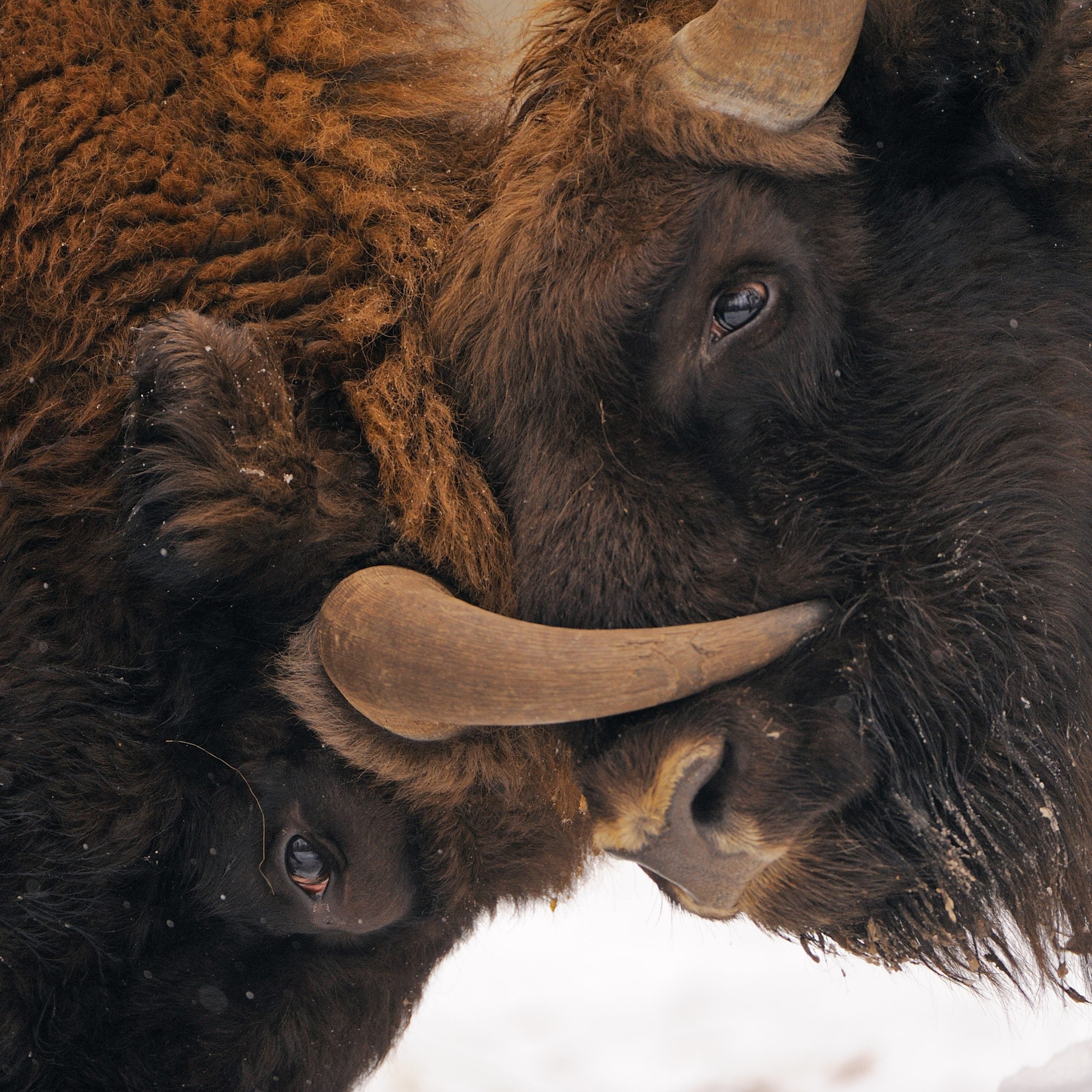Late last year, I was hiking in northern Spain when, just before sunset, I spotted a massive animal that I didn't think existed on this continent: a bison. What was it doing here, in a country that never knew the Wild West?��
“A lot of people don’t know about nature in Europe,” says��Frans��Schepers, the Managing Director of Rewilding Europe, an organization devoted to returning wildlife and wild places to the continent. “People don’t know that we even have a European bison. And, in Europe, it is our largest land mammal. This is something maybe we could say to European conservation organizations; we’re not selling our story well enough.”
Like in North America, the bison here were hunted to the very brink of extinction. But just as reintroduction efforts began in America during the late 1920s, the last few wild bison were being shot by hungry troops in Europe's forests. Reintroduction efforts here are still in their infancy. But on a continent with far higher population density,��where will newly wild European bison live? Frans sees an answer in Europe's increasingly abandoned farmland.
This is the story of the European Bison.
A Beast Almost Lost and Mostly Forgotten

European bison, also known as “wisent,” are . With adult males tipping the scales at up to 2,000 pounds and standing taller than its American cousins (six feet and more at the shoulder), they are the largest terrestrial mammals in Europe. Bulls can eat up to 130 pounds of fresh food a day and the animals' diet consists of over 200 different plants—both grazed and browsed. European bison (Bison bonasus) and the American bison (Bison bison)��are close relatives, descending from a common ancestor that is thought to have evolved out of Central Asia. But while the evolutionary track of one went east, crossing the Bering Strait into North America, the other spread west into Eurasia.��
Through their feeding, wanderings and lifecycle, they have the potential to improve soil quality, spread seeds, open dense vegetation to sunlight, and when they die, release an abundance of nutrients back into the ecosystem. Wolves, bears, birds, and every other member of the forest and meadow community can potentially benefit from their existence on the landscape.��
But the past has not been kind to these great bovines. As human populations grew on the continent and development increased, European bison were increasingly pushed towards the edge of extinction. By the 19th century there were only remaining in the wild:��one in Poland and the other in the western Caucasus Mountains. With World War I pushing hungry troops deep into the forest, and poaching rampant, both were made extinct in the wild��by 1927. But��a handful survived as royal gifts that had been given away over time to zoological gardens around Europe, with the ultimate number of remaining bison totaling just 54. ��
These surviving few were entered into a careful breeding program, which began to increase the population while maintaining as much genetic diversity as possible; much of this work taking place behind the Iron Curtain. For a time, the Nazi party even adopted the bison as .��
With the end of World War II and the close of the Cold War, a new era of international cooperation began. Today, information on each individual animal has since been documented through the to help in enhancing breeding efforts. Currently there are more than 200 breeding centers around Europe and the current population stands at over 5,000 as well as being listed as Vulnerable under the IUCN Red List. Starting in the 1950s, reintroduction efforts began to slowly take shape with the largest wild population now living in the of Poland and Belarus, having over 900 individuals.��
That being said, here’s a stark fact: there are still fewer European bison left roaming the wild than there are black rhinos in Africa.��
The New Wild

After decades of lackluster conservation efforts surrounding this species, stepped in. Established in 2011 from the Netherlands, the foundation aims to bring real wilderness back to Europe, supporting and finding the conservation of wildlife, and the reclamation of abandoned farm land for natural habitats.��With land abandonment becoming increasingly common in rural Europe as farming becomes less profitable and people are drawn to cities, opportunity is rising for conservation and restoration efforts to bring back not only iconic species, but also to introduce new sources of income to rejuvenate these regions. It's the organization's goal to “rewild” 100 million hectares (3,681 square miles)��of Europe by 2022.����Frans Schepers, managing director of Rewilding Europe, took the time to speak with me about their work and bison.��
“The whole of Europe is changing; everything is changing.��Socioeconomically, demographically, politically, you name it,” says Frans. “Nature has to also cope with those changes and remain relevant for European society. And it is relevant for European society, because it is our natural heritage and it is something we live on and depend on.”
Rewilding Europe has launched to get these animals back onto the landscape, with Romania becoming a showcase. On May 17, 2014, ��there, becoming the first of their kind to roam these mountains in over 250 years. Over the next five-year period Rewilding Europe, along with WWF-Romania, plans to release a total of 100 bison into the southern Carpathian Mountains, creating what is hoped will be a viable and free roaming population. Last year, their efforts were vindicated as the European Commission , providing critical funding for future releases, infrastructure,��and work with local communities.��
With this success comes the challenge of bringing awareness to the general public on the wild that Europe has to offer. “How can you love something, or even vote for it, if you don’t��know it exists? So the awareness about what Europe has to offer is priority number one,” Frans continues. “Rewilding is not going back to the past. We’re looking for wild nature in a modern, 21st century, Europe. There are huge opportunities and possibilities for that.”
In addition to assisting with efforts to reintroduce the bison, Rewilding Europe is also trying to create habitats and breeding programs for wild horses, and aims to “back breed” modern cattle to bring back the aurochs, the ancestor to all modern cattle.��
Looking Ahead

On that winter's evening, standing in the middle of a muddy track, it was at a breeding center, while walking the perimeter fence of their 20-hectare enclosure, that I stumbled upon the lone bull bison. Due to its size and wooded habitat, the in Palencia, Spain, does not guarantee its visitors a sighting, but opts for a more natural setting where the handful of bison can roam through meadows and forest at will.
As I toured the reserve and facilities over the days that followed, it was impossible not to feel a sense of hope for the future of wild Europe. Bringing back a species like the bison means more than just ecological or economic benefits. It means the return of wild environments, wild creatures, and the ecosystems they support and require. It means more wild areas across more of Europe.��I can only hope that the next bison I see isn’t behind an electric fence.


